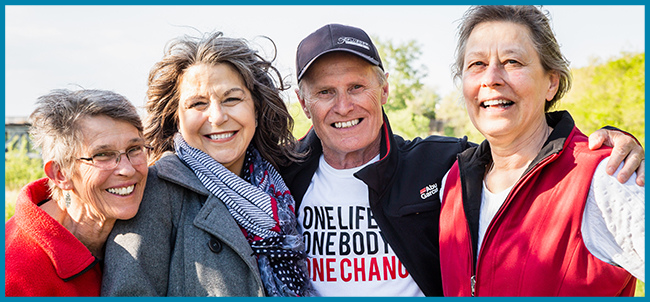Bronchoscopy
 A bronchoscopy is a test that allows the doctor to look through your nose or mouth into the trachea (windpipe) and down to the bronchi (large airways) in your lungs. This is done with a thin, flexible tube with a light and camera on the end called a bronchoscope. Your doctor can take tissue or fluid samples if needed, through a channel in the bronchoscope. Some specialized bronchoscopes such as endobronchial ultrasound (EBus) can give a more detailed image of the lungs and the lymph nodes located in the chest. The area where lymph nodes are located is called the mediastinum.
A bronchoscopy is a test that allows the doctor to look through your nose or mouth into the trachea (windpipe) and down to the bronchi (large airways) in your lungs. This is done with a thin, flexible tube with a light and camera on the end called a bronchoscope. Your doctor can take tissue or fluid samples if needed, through a channel in the bronchoscope. Some specialized bronchoscopes such as endobronchial ultrasound (EBus) can give a more detailed image of the lungs and the lymph nodes located in the chest. The area where lymph nodes are located is called the mediastinum.
Why is a bronchoscopy done?
There are many reasons for doing a bronchoscopy, such as:
- To find the cause of a lung condition such as infection, inflammation, scarring or cancer
- To treat a lung problem
- To sample abnormal areas seen on an X-ray
- To clear blockages of airways that might be caused by foreign objects or infection
- To sample enlarged lymph nodes near the airways
- To discover the reason for a cough that does not go away
How do I prepare for a bronchoscopy?
- Do not eat or drink after midnight the night before the test.
- Bring all your medications to the appointment.
- You may be instructed to stop taking anticoagulants (blood thinners) before the appointment. Be sure your doctor knows all the medications you take, including those that do not need a prescription.
- You will not be allowed to drive home, so be sure to arrange for someone to drive you home from the appointment.
What can I expect during a bronchoscopy?
 The total amount of time you will be at the appointment may be 4 or more hours. The bronchoscopy takes about 30 – 60 minutes to complete. You will have an intravenous (IV) line inserted to allow you to receive sedation (medicine to make you sleepy). You will be sleepy, but not completely asleep during the test.
The total amount of time you will be at the appointment may be 4 or more hours. The bronchoscopy takes about 30 – 60 minutes to complete. You will have an intravenous (IV) line inserted to allow you to receive sedation (medicine to make you sleepy). You will be sleepy, but not completely asleep during the test.
The doctor will spray or squirt liquid anaesthetic (freezing) into your mouth and throat to make them numb. It is normal to cough during the procedure. A bronchoscopy is not painful.
Your oxygen level and blood pressure will be monitored throughout the test. You will be given oxygen to breathe through your nose during the test.
What can I expect after a bronchoscopy?
- Coughing small amounts of blood-streaked sputum immediately after the test is common.
- You will not be allowed to drink or eat for about 2 hours after the test, until you can swallow normally. You will stay in the recovery area until you are able to eat and drink again.
- The effects of sedation may last for several hours. Do not drive, operate machinery, drink alcohol, or sign any legal documents for 24 hours following the test.
- You may have a sore throat, cough or hoarseness for a few days following the test. You may also develop a low grade fever (<38.5C) for which you can take Tylenol.
What are the risks of a bronchoscopy?
Bronchoscopy is a safe procedure. However, no medical procedure is without risk.
- Bleeding may occur in the lungs after a biopsy (sample) has been taken. This is usually only a few tablespoons of blood-streaked sputum.
- A rare complication after a biopsy is a collapsed lung (pneumothorax). This usually does not require treatment, but in some cases a small plastic tube is inserted into the space around the lung to remove the air and re-expand the lung.
- Chest infection, allergic drug reactions, abnormal heart rhythms and heart attacks may occur but are not common.
Your doctor may discuss other complications with you before you sign a consent form. Any questions or concerns that you may have can be discussed at that time.
When should I contact my doctor after a bronchoscopy?
 You should contact the physician who did the bronchoscopy or go to the Emergency Department if you develop any of the following:
You should contact the physician who did the bronchoscopy or go to the Emergency Department if you develop any of the following:
- Fever > 38.5 (101.5 Fahrenheit)
- Any significant chest pain
- Coughing up significant amounts of blood
- Shortness of breath





